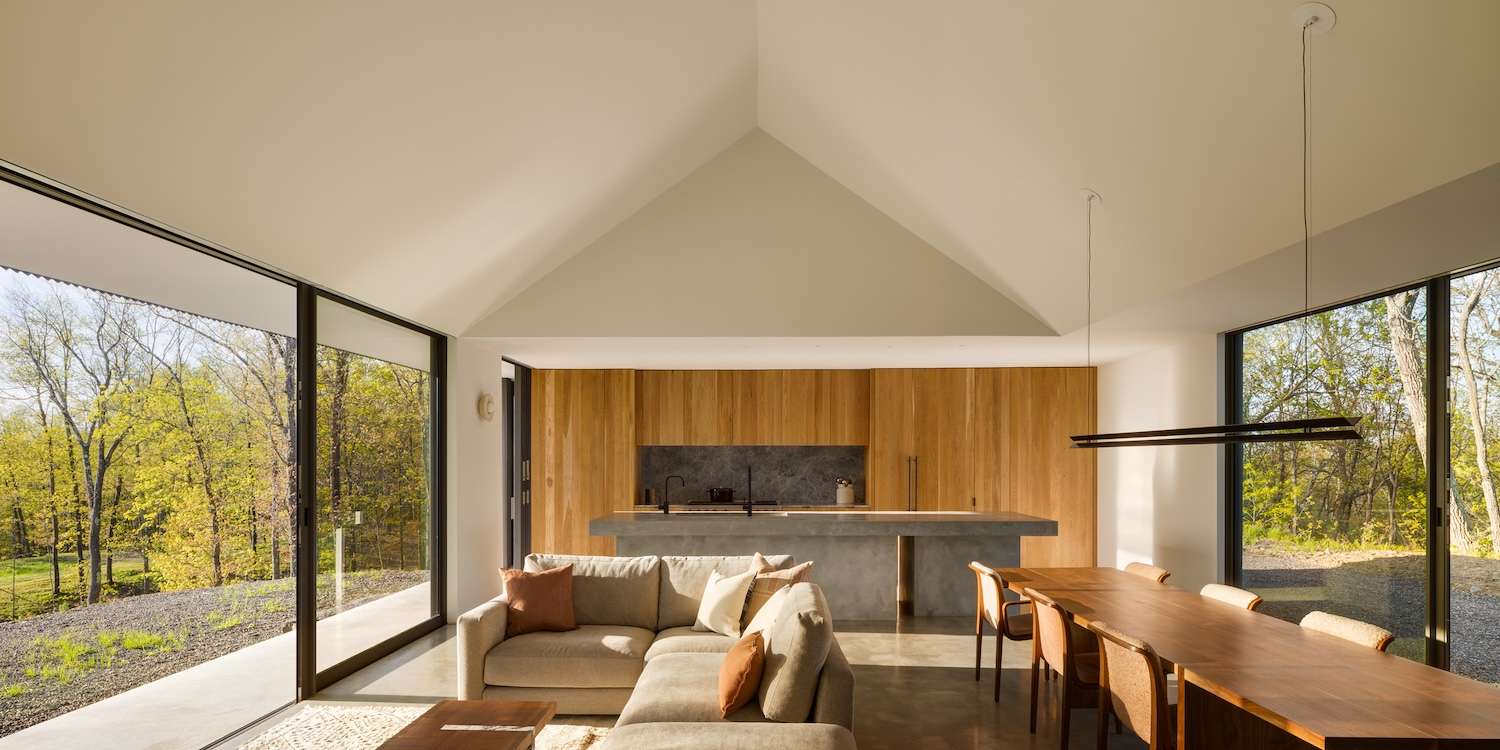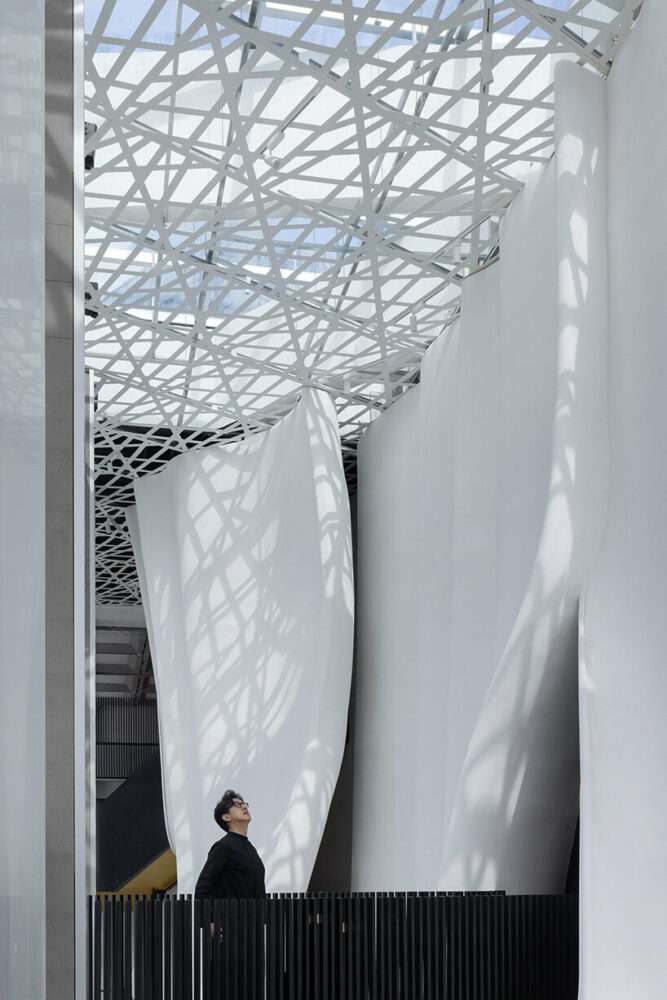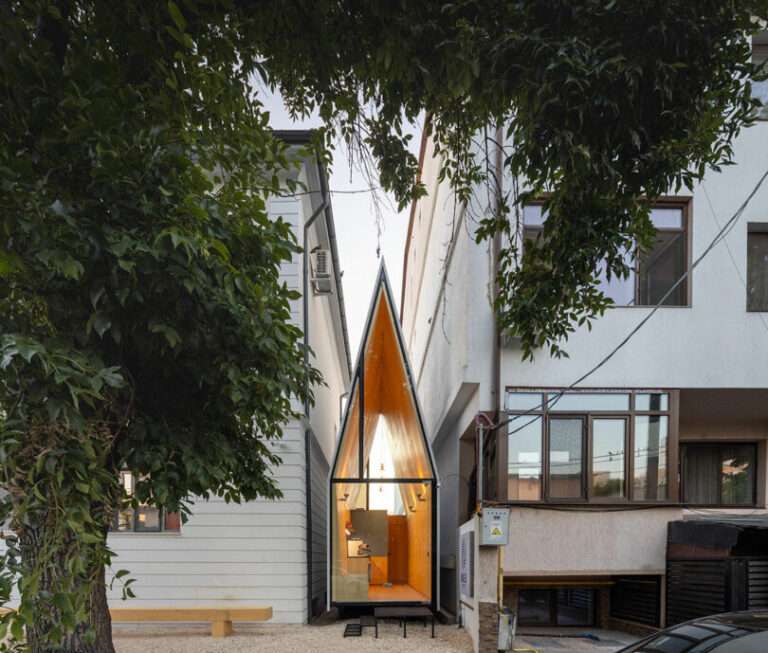
Ridge House is a minimal home located in Upstate New York, designed by Worrell Yeung. The 128-foot gabled structure emerges from its Columbia County ridgeline like a contemporary interpretation of the vernacular barn, yet its board-formed concrete walls and expansive glazing speak to a distinctly modern sensibility. This duality reflects a broader movement in contemporary architecture toward what might be called “informed minimalism” – design that appears simple but reveals layers of sophistication through careful study of proportion, material, and site response.
The house’s organizational strategy – dividing public and private realms across a central threshold – echoes the spatial logic of traditional Japanese architecture, where transition spaces hold particular significance. Yet Worrell Yeung’s interpretation feels distinctly American in its embrace of the horizontal landscape and celebration of distant views. The pass-through entry, marked by those commanding concrete walls, creates what the Japanese might call an “in-between space,” a pause that heightens awareness of the transition from exterior to interior.
“When I saw this site, with its remarkable views to not one but two mountain ranges, I knew I had something special,” the client reflects, and this recognition of place becomes the driving force behind every design decision. The custom dining table by Bien Hecho and the twin-gabled lighting fixtures – themselves miniature architectural gestures – demonstrate how even functional elements can reinforce spatial narratives.
Most intriguing is Worrell Yeung’s solution to the “visionless window” – sections of dark-stained white oak that provide ventilation while maintaining the geometric integrity of the massive seven-by-nine-foot openings. This detail reveals the architects’ commitment to problem-solving through design rather than compromise, transforming a technical challenge into an opportunity for material expression.
The concrete kitchen island and fireplace serve as anchoring elements within the soaring social space, their mass providing visual weight that grounds the otherwise ethereal volume. These elements speak to a tradition of hearth and table as organizing principles in domestic architecture, updated through contemporary material choices and spatial arrangements.





